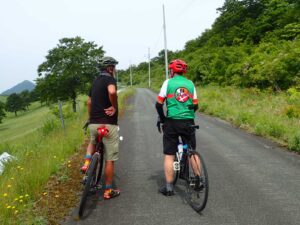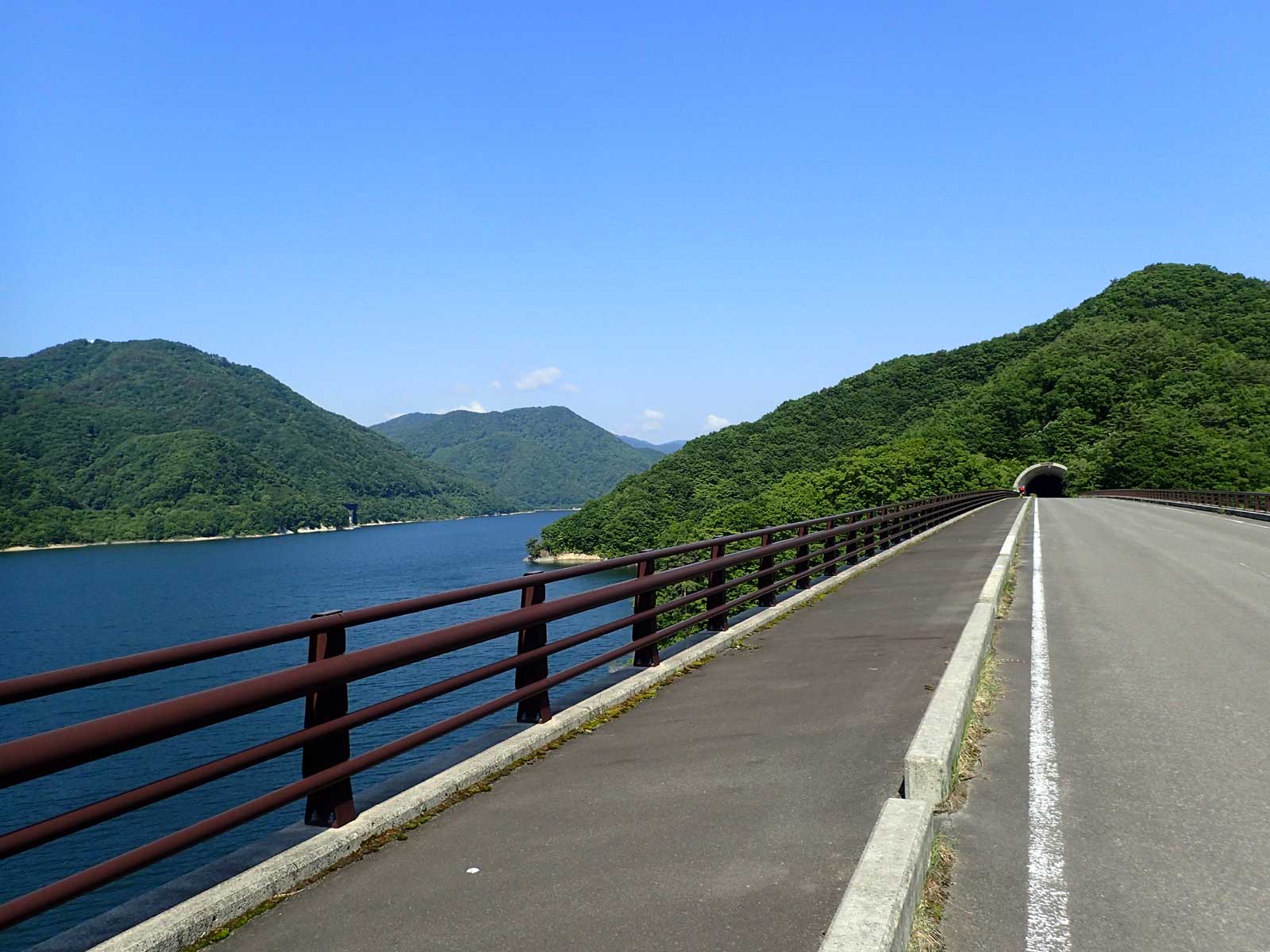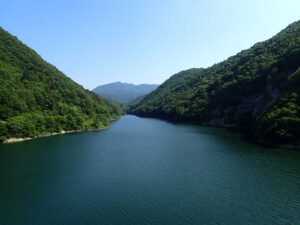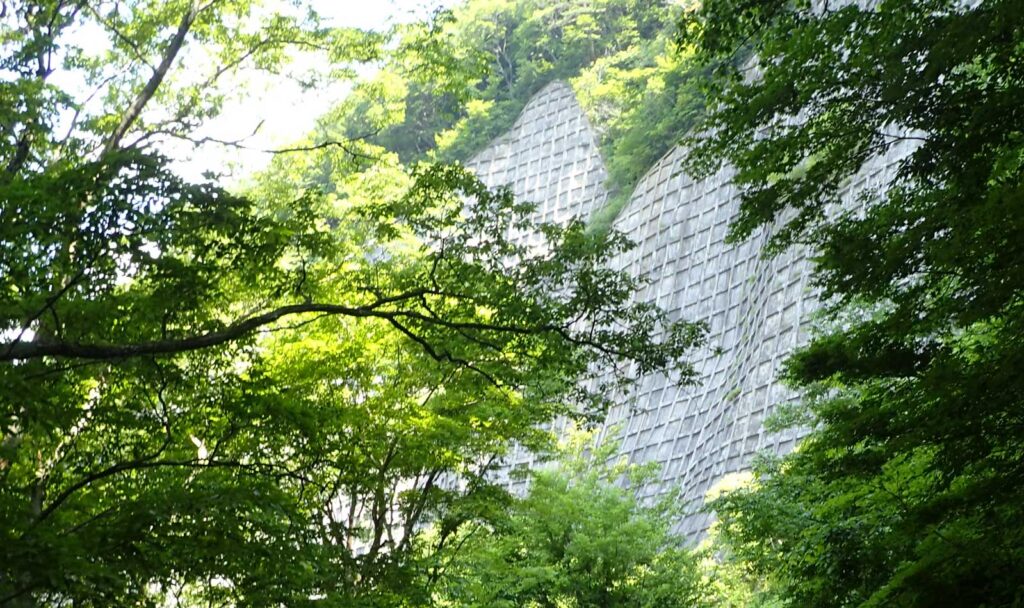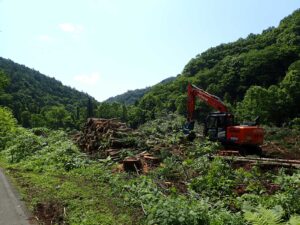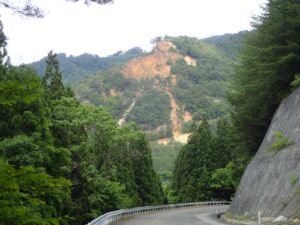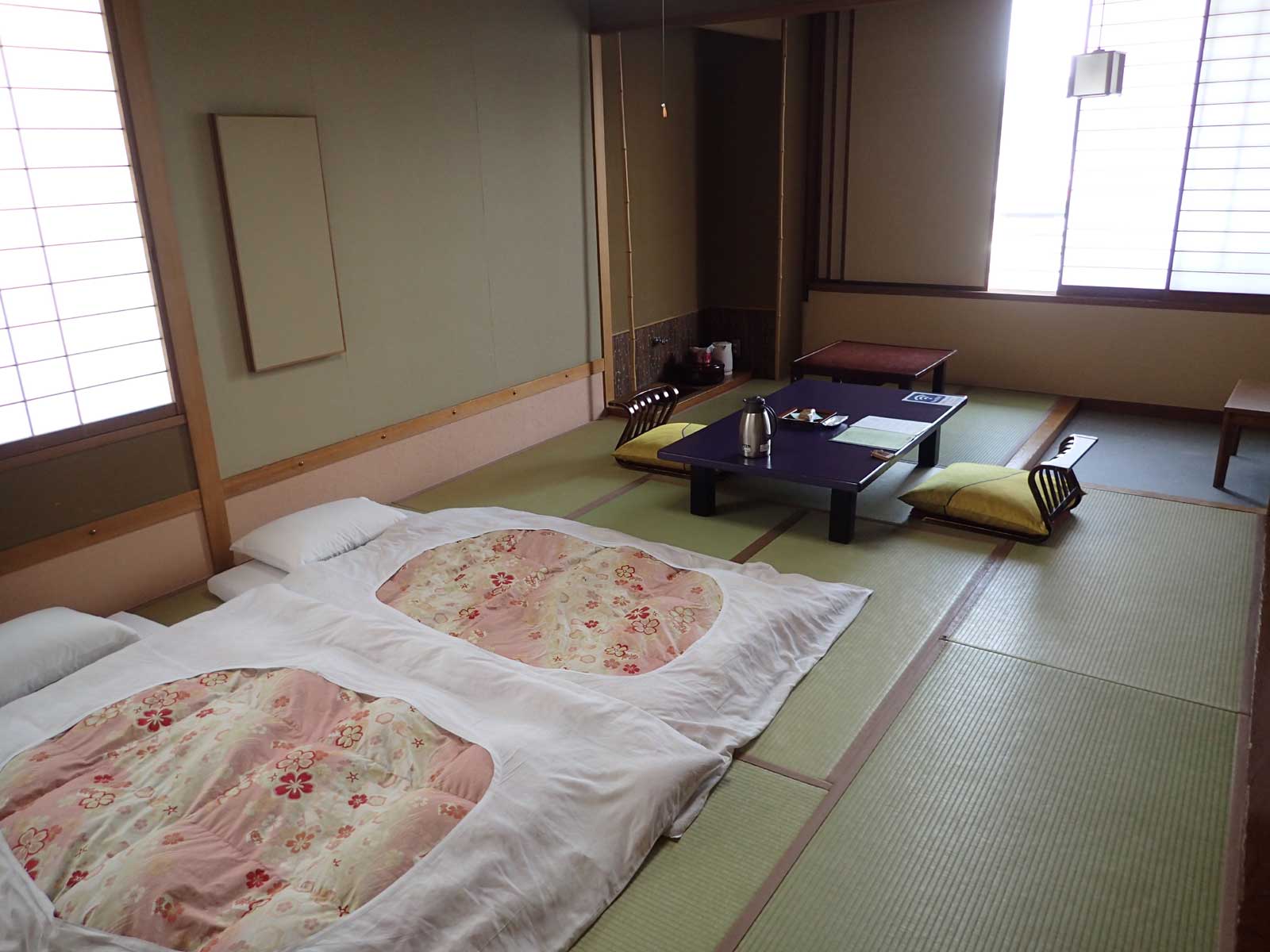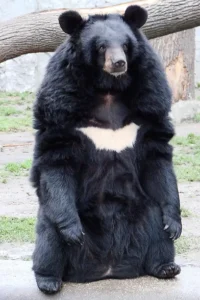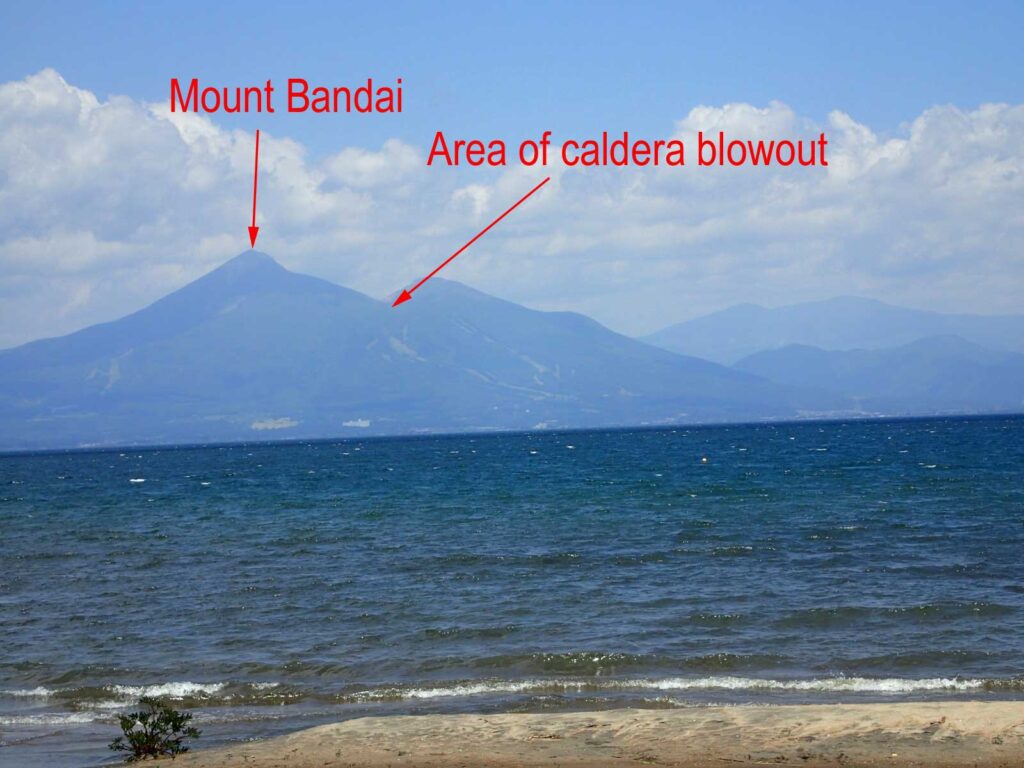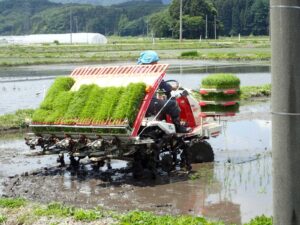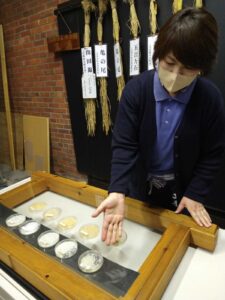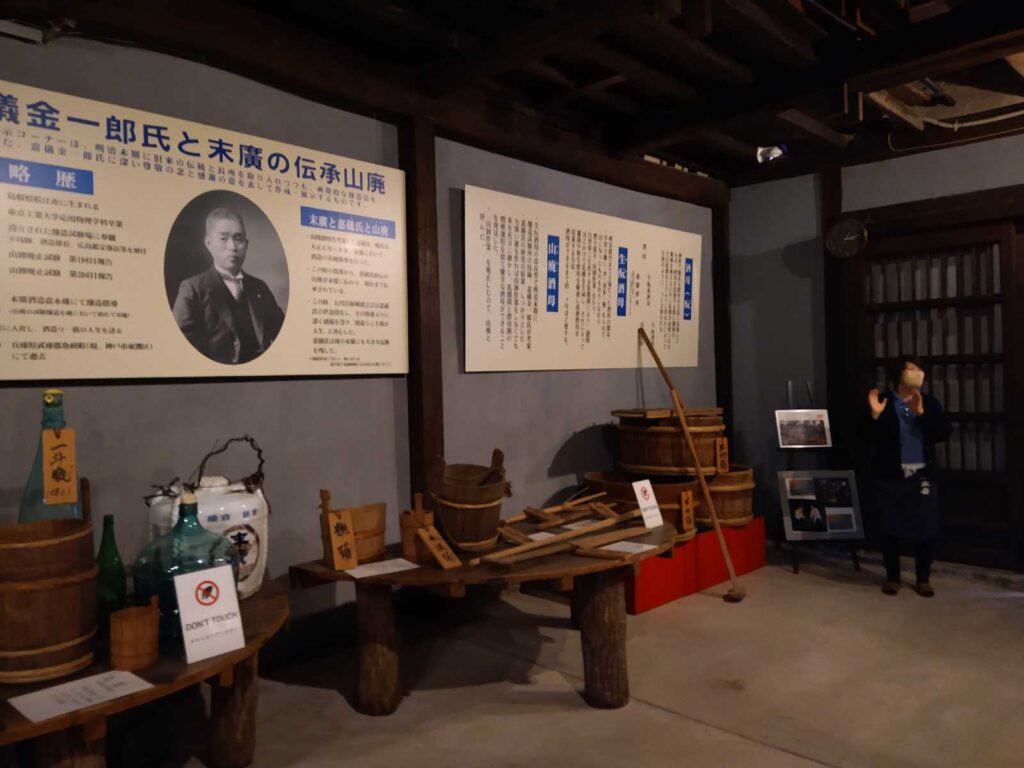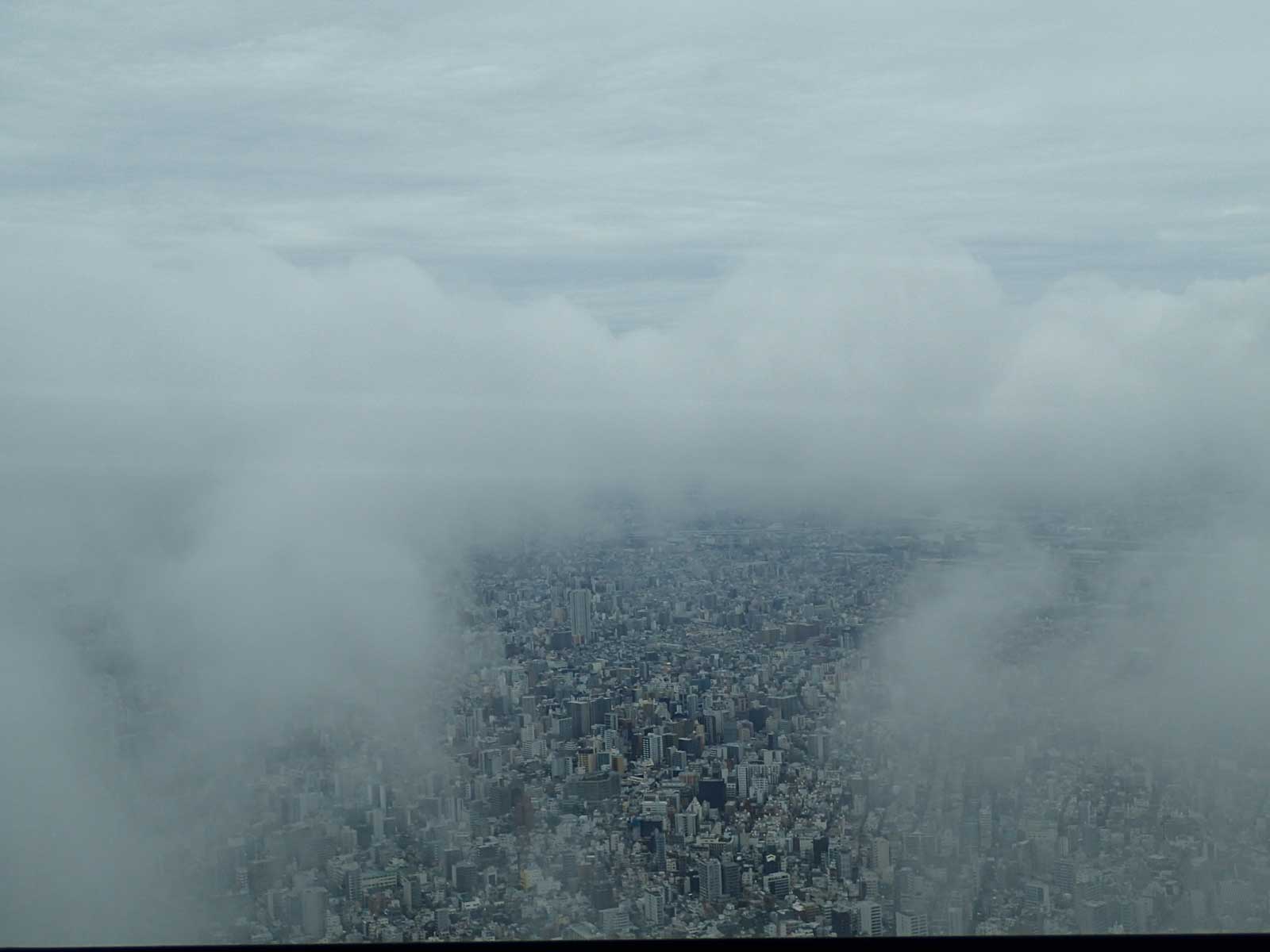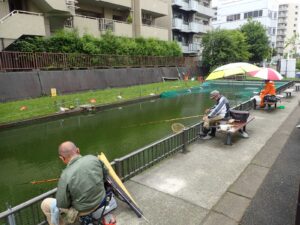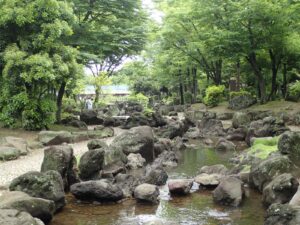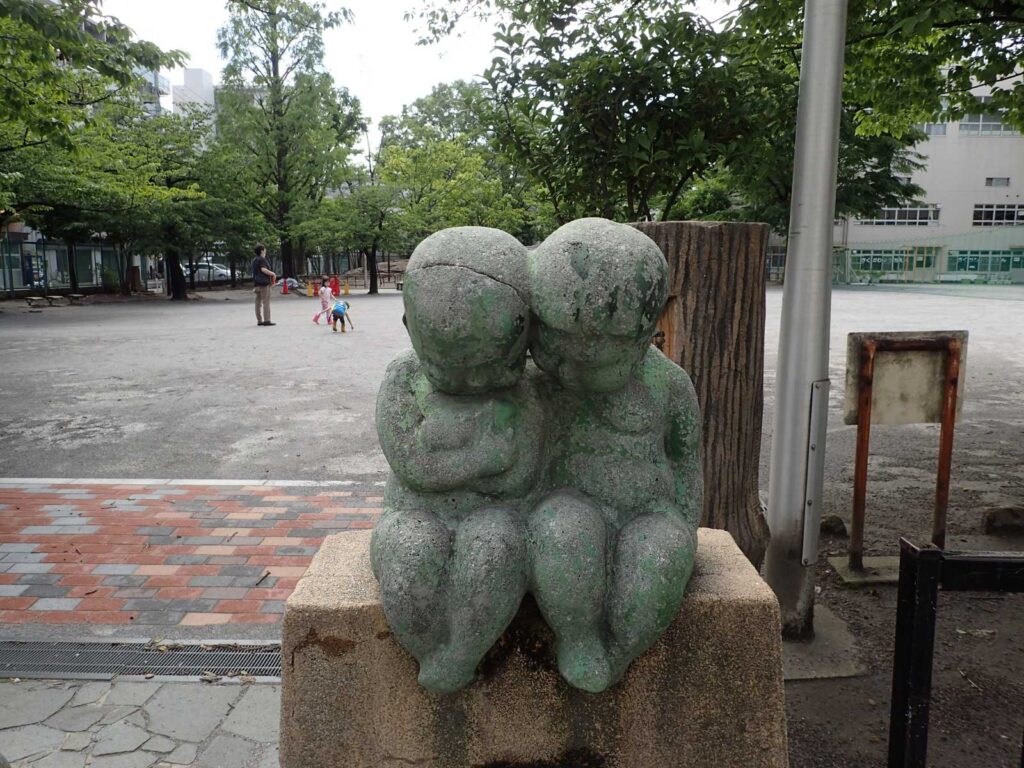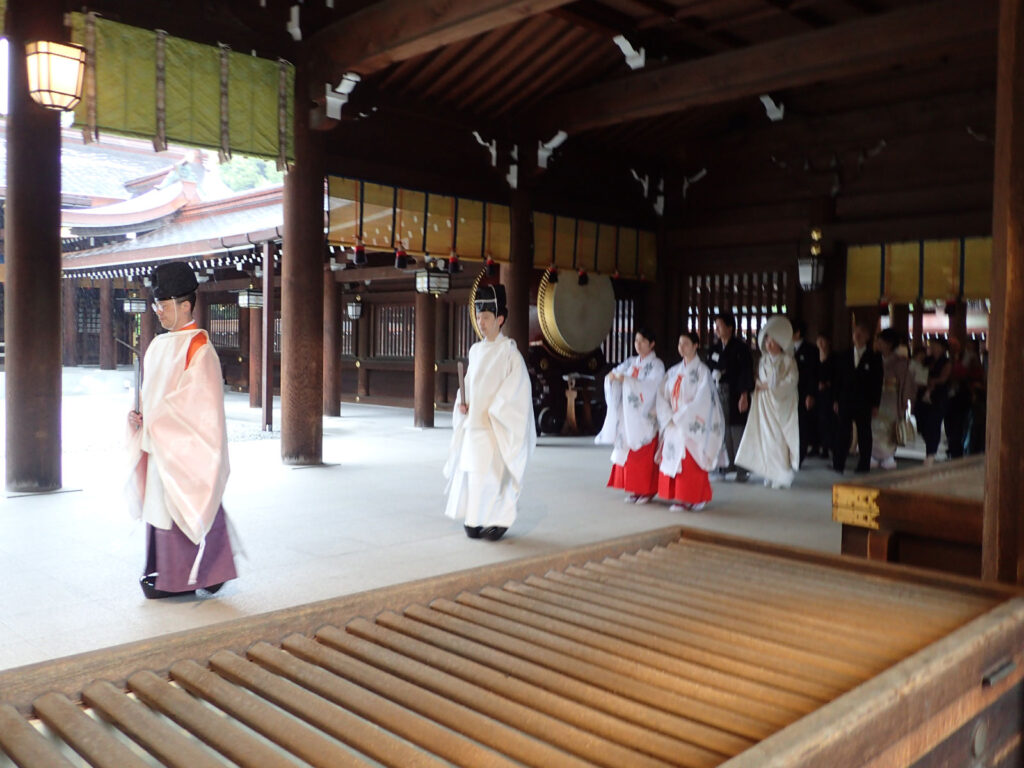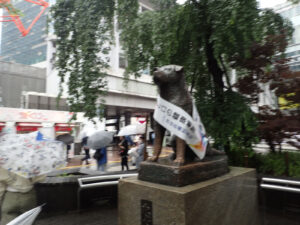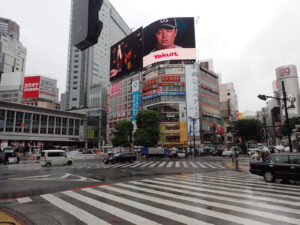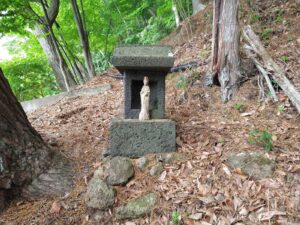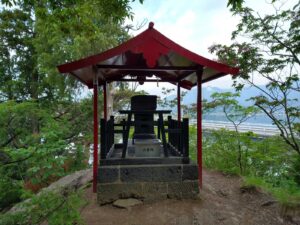Tendo to Hiraizumi
June 8, 2009
A ride on a bus took us to our starting point today and once on our bikes we began the longest climb of a day that featured nine climbs worthy of note by our navigation software. Nothing like getting the biggest and baddest out of the way first. As climbs go, it was scenic, taking a less traveled and as a result, steeper route. After zig-zagging through numerous switchbacks and densely treed forest, we came out into an alpine meadow that covered the apex of our climb. This meadow was home to a small farm and cattle ranching homestead and offered some outstanding vistas to go along with its outstandingly unending switchbacks. It offered plenty of excuses for stopping to just take it all in.
While this was the big climb of the day the remaining eight climbs made up for their shortness by often being fairly steep. It is good that we now all have strong climbing legs that get us up the hills even if that journey is a slow one. I just try to do my own ride and not worry about who passes me. I know that it is inevitable that some will. However, we all get to the same place and even the slowest of us is doing something that 99% of the world’s population will never try.
Along today’s route I was able to see more of Japan’s charmingly different way at looking at road and other signage. Cute cartoon characters seem to be mandated for nearly every cautionary sign, advertisement or possibly because someone just feels like adding a personal touch to the landscape. I have some examples below that represent only a few of the multitude that I have see and taken time to photograph.
Tomorrow, June 9th is a rest day at a resort spa some distance from the nearby small village. It will be pouring rain and the resort has all that I need to spend a comfortable day relaxing. I may not post anything about it and instead get caught up with my email and maybe write these words.


